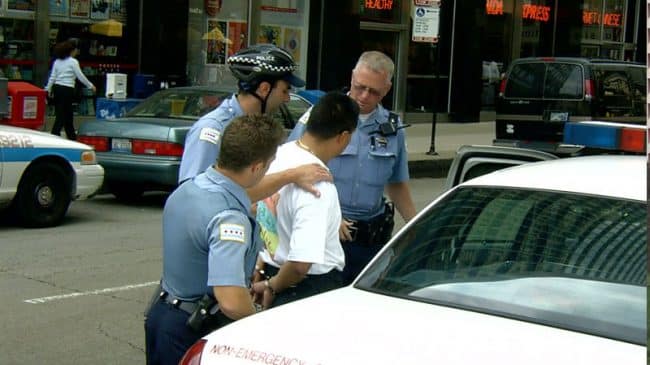Over the past several decades, Illinois’ prison population has exploded. Between 1984 and 2014, inmate population increased by roughly 182 percent, while the state population only grew by 12 percent over the same time period.
This rapid increase in the prison population has come with numerous costs for the state: increased prison budgets, growth in the number of people cycling in and out of prison, wasted human capital and overall strain on a system that has become too big to manage.
One major first step in reversing this cycle is revising Illinois’ draconian sentencing rules for low-level, nonviolent drug possession and theft crimes. People convicted of these types of crimes, or Class 4 felonies, are the biggest driver behind Illinois’ prison population growth. Between 1989 and 2014, 55 percent of the increase in prison admissions was due to more individuals convicted of Class 4 felonies. Today, Class 4 felony offenders make up the largest sector of incoming inmates in Illinois, accounting for over 37.7 percent of all admissions. The percentage of inmates incarcerated for Class 4 felonies has shot up faster than any other felony class – these inmates made up 11.9 percent of Illinois’ prison population as of 2013, compared with 4.1 percent in 1993.
Illinois prisons are among the most overcrowded in the nation, which is dangerous for both inmates and staff. In 2014, the average cost of incarcerating each inmate per year in Illinois was $21,071, and the cost of maintaining the system ballooned to almost $1.4 billion per year. This figure does not include additional outside costs taxpayers bear, such as administrative costs, pension contributions, employee benefits and taxes, retiree health care contributions, and capital costs.
To address these problems, in February 2015, Gov. Bruce Rauner created a criminal-justice task force to identify areas of the criminal-justice system that could be reformed that would result in a 25 percent reduction in the prison population by 2025 – an ambitious task.
The best way to start would be to change how the state responds to low-level, nonviolent drug and property felonies – a modest yet necessary first step in making broader reforms.
In addition to being overcrowded and expensive for taxpayers to maintain, the Illinois Department of Corrections system does not have a successful rehabilitative track record, as nearly half of all prisoners released each year – 48 percent – recidivate, or are convicted of a new crime, within three years of release.
There’s little evidence that requiring low-level offenders to serve lengthy prison terms produces positive results for public safety. Across the country, many states have reduced their prison populations and violent crime rates simultaneously. Several of these states saw reductions in their prison populations and violent crime rates as a direct result of comprehensive sentencing reforms.
With Rauner’s goal in mind, this report recommends making several changes to the way Class 4 felony offenders are sentenced:
- Decriminalizing the possession of small amounts of controlled substances for personal use.
- If decriminalization isn’t adopted, Illinois should at least create a threshold necessary to trigger felony drug possession, effectively making possession of certain controlled substances below that threshold a Class A misdemeanor offense. Several states across the country have done this, and seen positive results in terms of public safety and taxpayer savings. Indeed, South Carolina has seen its prison population decrease by nearly 12 percent and its violent crime rate decrease by over 25 percent in just four years after reforms were enacted. Since the reforms were enacted, the state has also saved over $18 million.
- Illinois should increase the threshold necessary to trigger all low-level felony retail theft and felony theft offenses. The felony retail theft threshold is now less than $300 in some cases, and the felony theft threshold is currently less than $500 in some cases. Many other states’ thresholds are twice or four times as high as Illinois’. Wisconsin has a $2,500 felony theft threshold, and the rate of theft in the state is similar to Illinois’, which shows this reform would not necessarily lead to an increase in theft in the state, but instead allow individuals who commit low-level offenses to be punished more proportionately.
This brief shows that reforming the state’s lowest-level nonviolent drug and property felonies is a modest yet necessary first step in making broader reform – and in meeting the governor’s 25 percent reduction goal – an eventual reality.

